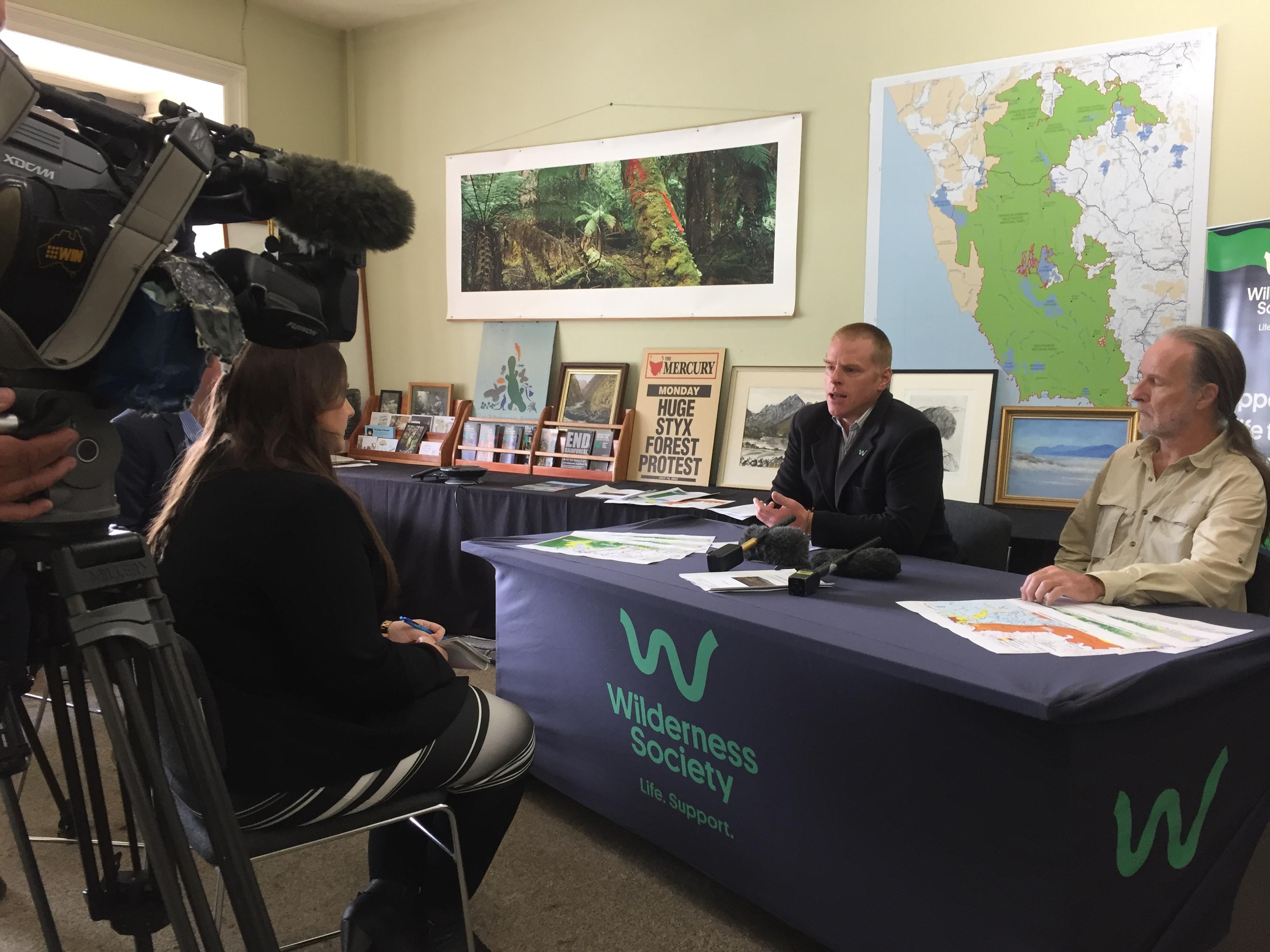Media Releases - 27 November 2018
Expert independent assessment confirms Lake Malbena development will degrade wilderness values

- Confirms breach of World Heritage Committee decision to protect wilderness
- Affirms expert view from three separate Government advisory councils that the Lake Malbena development should not progress
The Wilderness Society has released the report that State and Federal Governments failed to commission—a professional assessment of the negative impact on the wilderness values of the Tasmanian Wilderness World Heritage Area (TWWHA), caused by a chopper-accessed, luxury commercial accommodation development at Lake Malbena.
The assessment was conducted by Martin Hawes, the author of the two most recent (2006[i] and 2016[ii]) government-auspiced reports into TWWHA wilderness values, including that published in the 2016 TWWHA Management Plan (pg. 176). The report confirms that the establishment of a new point of commercial helicopter access will degrade wilderness across almost 50 square kilometres, including well into the Walls of Jerusalem National Park. The associated flight path further exacerbates the extent of impacts on wilderness values and people’s experience of it.
“Three of the government’s own expert advisory councils recommended against this development’s approval and this report demonstrates one of the key reasons why—because it will degrade wilderness values across a large area and impact the experience of other park users,” said Vica Bayley, spokesperson for the Wilderness Society.
Wilderness is wild country that is large, intact and remote from settlement and points of mechanised access. It is a critical value of the TWWHA, highlighted by the World Heritage Committee in repeated calls for protection.
“This is the assessment the Morrison Government has failed to conduct, choosing to ignore the predictable impacts on wilderness and wave through the development against expert advice," said Mr Bayley.
Key findings of the report include:
“The assessment shows significant loss of WC (Wilderness Character) at the lake and in the surrounding country. This loss is due to the reduction in access-time remoteness associated with allowing commercial helicopter access to the lake.”
“The fact that the development would be located outside the Wilderness Zone would not prevent it from negatively impacting WC in the area. Losses would occur both inside and outside the Wilderness Zone and the Walls of Jerusalem National Park. Indeed, the heaviest losses would occur inside the Wilderness Zone and inside the National Park.”
“…for visitors who access a place like Lake Malbena on foot (and potentially also by pack-raft), the sense of solitude and isolation would be dramatically impacted by the arrival of helicopters—disgorging clients fresh from civilisation—and even by the knowledge that such landings can occur there.”
Since 2015, the World Heritage Committee and expert advisers to UNESCO have called for assessment processes that protect the values of the TWWHA, including its ‘wilderness character’.
The below entities are formal, expert advisory councils to the State and/or Federal Governments who recommended against the progression of the Lake Malbena Development as part of the federal assessment process. These are extracts of their submissions to the assessment of the Lake Malbena development conducted under federal law.
“The buildings, helipad and tracks do not conform to the zoning prescriptions in the TWWHA Management Plan, which were designed to protect world and natural heritage values. Permanent buildings with a 40x20m footprint that would be in place for 12 months each year indicated that this is constructed accommodation and NOT a standing camp. The proposal also raises the issue of appropriate activities in self-reliant recreation zone (hut construction) and wilderness zone (helicopter access. The World Heritage Committee (39 COM 7B.35,2015) has called for strict criteria for tourism developments, and mentioned wilderness explicitly in this context:
5 c) Establishment of strict criteria for new tourism development within the property which would be in line with the primary goal of protecting the property’s OUV, including its wilderness character and cultural attributes;
The cumulative impact on both world heritage and natural heritage values would be considerable, particularly noting the impact of helicopters on the outstanding natural aesthetic value of the wilderness area in which it is situated.” (AHC submission #1, undated)
AND
“The proponent has provided additional information that attempts to address some of the issues raised by the original referral…
However, several fundamental concerns are not addressed…
The additional information provided allows for a better assessment of the proposal. However, the cumulative impact on both world heritage and natural heritage values would be considerable, particularly noting the impact of helicopters on the outstanding natural aesthetic values of the wilderness area in which it is situated.” (AHC submission # 2, 13 July 2018)
Aboriginal Heritage Council of Tasmania
“…it is the Council’s view that there should be no approval for the current proposal by Wild Drake Pty Ltd.”
“Further, in light of our concerns and the matters raised above, we believe that it is your obligation as Minister to not approve this project proposal.” (by submission 18 July 2018)
“To reaffirm our view, at the present time Council is opposed to this project proposal and is concerned that the proponent has not provided you with all the relevant information about the proposal.” by submission 24 July 2018)
National Parks and Wildlife Advisory Council
“the proponent does not appear to address the fundamental concern that the proposal is for a development with several buildings, not a ‘standing camp’”
“(re helicopter access NPWAC) is concerned that without adequate consideration, precedents will be set that will degrade the World Heritage Values of the TWWHA”
“NPWAC does not support this project progressing at this time and reiterates that contentious projects such as this should not be considered until there is an agreed framework to guide assessment”
Read the full Hawes report here.
[i] https://www.parks.tas.gov.au/file.aspx?id=38815
[ii] https://dpipwe.tas.gov.au/conservation/tasmanian-wilderness-world-heritage-area-(twwha)/twwha-management-plan